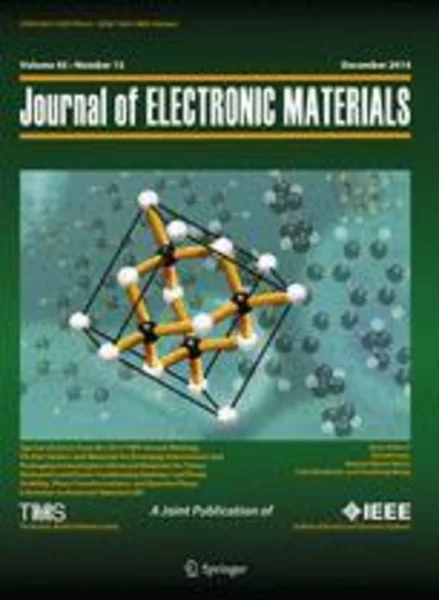-
four-state sub-12-nm fets employing lattice-matched ii–vi barrier layers
جزئیات بیشتر مقاله- تاریخ ارائه: 1392/07/24
- تاریخ انتشار در تی پی بین: 1392/07/24
- تعداد بازدید: 789
- تعداد پرسش و پاسخ ها: 0
- شماره تماس دبیرخانه رویداد: -
three-state behavior has been demonstrated in si and ingaas field-effect transistors (fets) when two layers of cladded quantum dots (qds), such as sio x -cladded si or geo x -cladded ge, are assembled on the thin tunnel gate insulator. this paper describes fet structures that have the potential to exhibit four states. these structures include: (1) quantum dot gate (qdg) fets with dissimilar dot layers, (2) quantum dot channel (qdc) with and without qdg layers, (3) spatial wavefunction switched (sws) fets with multiple coupled quantum well channels, and (4) hybrid sws–qdc structures having multiple drains/sources. four-state fets enable compact low-power novel multivalued logic and two-bit memory architectures. furthermore, we show that the performance of these fets can be enhanced by the incorporation of ii–vi nearly lattice-matched layers in place of gate oxides and quantum well/dot barriers or claddings. lattice-matched high-energy gap layers cause reduction in interface state density and control of threshold voltage variability, while providing a higher dielectric constant than sio2. simulations involving self-consistent solutions of the poisson and schrödinger equations, and transfer probability rate from channel (well or dot layer) to gate (qd layer) are used to design sub-12-nm fets, which will aid the design of multibit logic and memory cells.
مقالات جدیدترین رویدادها
-
استفاده از تحلیل اهمیت-عملکرد در ارائه الگوی مدیریت خلاقیت سازمانی و ارائه راهکار جهت بهبود
-
بررسی تاثیر ارزش وجوه نقد مازاد بر ساختار سرمایه شرکت های پذیرفته شده در بورس اوراق بهادار تهران
-
بررسی تأثیر سطح افشای ریسک بر قرارداد بدهی شرکت های پذیرفته شده در بورس اوراق بهادار تهران
-
بررسی تأثیر رتبه بندی اعتباری مبتنی بر مدل امتیاز بازار نوظهور بر نقد شوندگی سهام با تأکید بر خصوصی سازی شرکت ها
-
تأثیر آمیخته بازاریابی پوشاک ایرانی بر تصویر ذهنی مشتری پوشاک ایرانی (هاکوپیان)
-
شبیه سازی تبخیر با استفاده از مدل های فازی عصبی و مقایسه آن با مدل های سری زمانی (مطالعه موردی: دشت جم)
-
کاربرد جدول عمر در برآورد طول عمر و عوامل موثر بر آن در سرطان مری
-
تأثیر تحریک الکتریکی با فرکانس پایین بر اکتساب کیندلینگ و انتقال سیناپسی در شکنج دندانه دار موش صحرایی
-
گزارش یک مورد سندرم نورولپتیک بدخیم ناشی از مصرف ریسپریدون در افراد با ریسک پذیری پایین
-
ranking of the competitive service quality factors using fahp and fuzzy topsis techniques
مقالات جدیدترین ژورنال ها
-
مدیریت و بررسی افسردگی دانش آموزان دختر مقطع متوسطه دوم در دروان کرونا در شهرستان دزفول
-
مدیریت و بررسی خرد سیاسی در اندیشه ی فردوسی در ادب ایران
-
واکاوی و مدیریت توصیفی قلمدان(جاکلیدی)ضریح در موزه آستان قدس رضوی
-
بررسی تاثیر خلاقیت، دانش و انگیزه کارکنان بر پیشنهادات نوآورانه کارکنان ( مورد مطالعه: هتل های 3 و 4 ستاره استان کرمان)
-
بررسی تاثیر کیفیت سیستم های اطلاعاتی بر تصمیم گیری موفق در شرکتهای تولیدی استان اصفهان (مورد مطالعه: مدیران شرکتهای تولیدی استان اصفهان)
-
تأثیر عوامل عاطفی بر واکنش های رفتاری مشتری به تبلیغات شخصی شده آنلاین با نقش میانجی مولفه های نظریه انتخاب عقلایی
-
بررسی نقش تحقیق و توسعه در ویژگی های کارآفرینی کارکنان شرکت ایران خودرو شهر تهران
-
ملاک های سلامت معنوی در پنج ساحت انسان مبتنی بر آموزه های قرآن
-
ارتباط تعامل آمیز سبک زندگی اسلامی با ویژگی های شخصیتی
-
دانشگاه، اخلاق مداری و کارآفرینی




سوال خود را در مورد این مقاله مطرح نمایید :